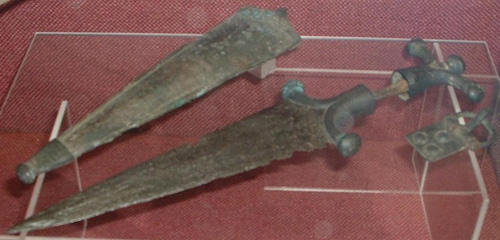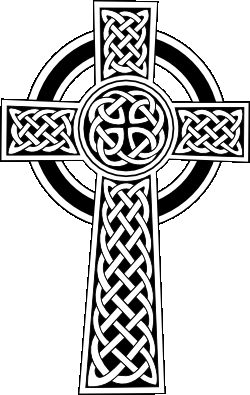|
|
| Home |Software | Web Games | Quizzes | Free for Teachers | About | Contact | Links |
|
|
The Celts
The term Celts refers to any of a number of ancient peoples in Europe using the Celtic languages, which form a branch of Indo-European languages, as well as others whose language is unknown but where associated cultural traits such as Celtic art are found in archaeological evidence. Historical theories were developed that these factors were indicative of a common origin, but later theories of culture spreading to differing indigenous peoples have recently been supported by genetic studies. Though the spread of the Roman empire led to continental Celts adopting Roman culture, the development of Celtic Christianity in Ireland and Britain brought an early medieval renaissance of Celtic art between 400 and 1200. Antiquarian interest from the 17th century led to the term Celt being developed, and rising nationalism brought Celtic revivals from the 19th century in areas where the use of Celtic languages had continued.
Today, "Celtic" is often used to describe the languages and respective cultures of Ireland, Scotland, Wales, Cornwall, the Isle of Man and the French region of Brittany, but correctly corresponds to the Celtic language family - in which are still spoken: Scottish, Irish and Manx (Gaelic languages) and Welsh, Breton and Cornish (Brythonic languages).

Celtic Dagger and Scabbard
The first literary reference to the Celtic people, as keltoi or hidden people, is by the Greek historian Hecataeus in 517 BC. He locates the Keltoi tribe in Rhenania (West/Southwest Germany). According to Greek mythology, Celtus was the son of Heracles and Celtine, the daughter of Bretannus. Celtus became the primogenitor of Celts. In Latin Celta, in turn from Herodotus' word for the Gauls, Keltoi. The Romans used Celtae to refer to continental Gauls, but apparently not to insular Celts, which were divided into Goidhels and Britons, and possibly other peoples.
The indigenous populations of Britain and Ireland today are primarily descended from the ancient peoples that have always inhabited these lands. As to their culture, little is known but remnants remain primarily in the naming of certain geographical features, such as the rivers Clyde, Tamar, Thames and Tyne. By the Roman period most of the inhabitants of the isles of Ireland and Great Britain (the ancient Britons) were speaking Goidelic or Brythonic languages, close counterparts to Gallic languages spoken on the European mainland. Historians explained this as the result of successive invasions from the European continent by diverse Celtic-speaking peoples over the course of several centuries.
At the dawn of history in Europe, the Celts in present-day France were known as Gauls. Their descendants were described by Julius Caesar in his Gallic Wars. There was also an early Celtic presence in northern Italy. Other Celtic tribes invaded Italy, establishing there a city they called Mediolanum (modern Milan) and sacking Rome itself in 390 BC following the Battle of the Allia. A century later the defeat of the combined Samnite, Celtic and Etruscan alliance by the Romans in the Third Samnite War sounded the end of the Celtic domination in Europe, but it was not until 192 BC that the Roman armies conquered the last remaining independent Celtic kingdoms in Italy. Under Caesar the Romans conquered Celtic Gaul, and from Claudius onward the Roman empire absorbed parts of the Celtic British Isles. Roman local government of these regions closely mirrored pre-Roman 'tribal' boundaries, and archaeological finds suggest native involvement in local government. Latin was the official language of these regions after the conquests.

"Celtic Cross"
While the regions under Roman rule adopted Christianity along with the rest of the Roman empire, unconquered areas of Scotland and Ireland moved from Celtic polytheism to Celtic Christianity which was a major source of missionary work in other parts of Britain and central Europe. This brought the early medieval renaissance of Celtic art between 390 and 1200, developing many of the styles now thought of as typically Celtic, and found through much of Ireland and Britain, including the north-east and far north of Scotland, Orkney and Shetland Islands. This was brought to an end by Roman Catholic and Norman influence, though the Celtic languages and some minor influences of the art continued.
Elsewhere, the Celtic populations were assimilated by others, leaving behind them only a legend and a number of place names such as Bohemia, after the Boii tribe which once lived there, or the Kingdom of Belgium, after the Belgae, a Celtic tribe of Northern Gaul and south-eastern England. Their mythology has been absorbed into the folklore of half a dozen other countries. For instance, the famous Medieval English Arthurian tale of Sir Gawain and the Green Knight is almost certainly partially derived from the medieval Irish text Fled Bricrend (The Feast of Bricriu).